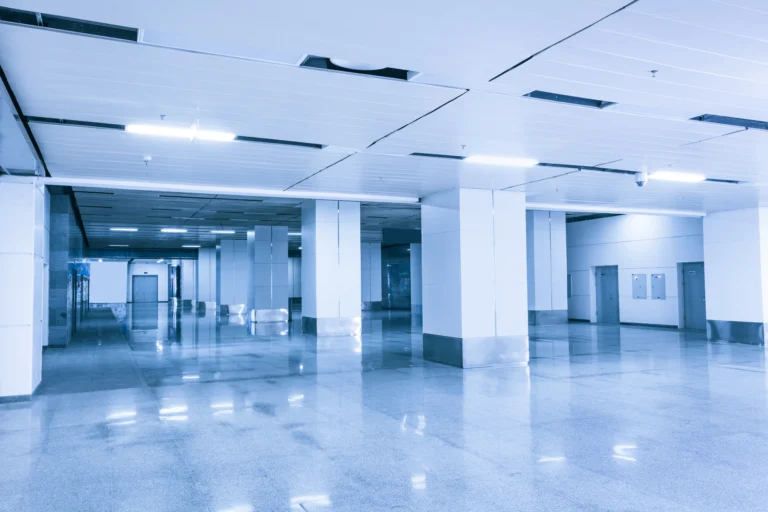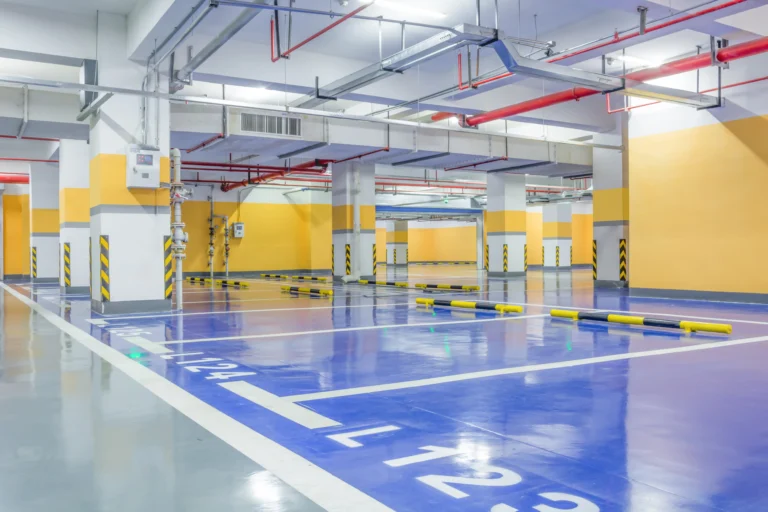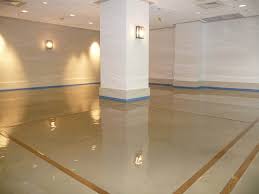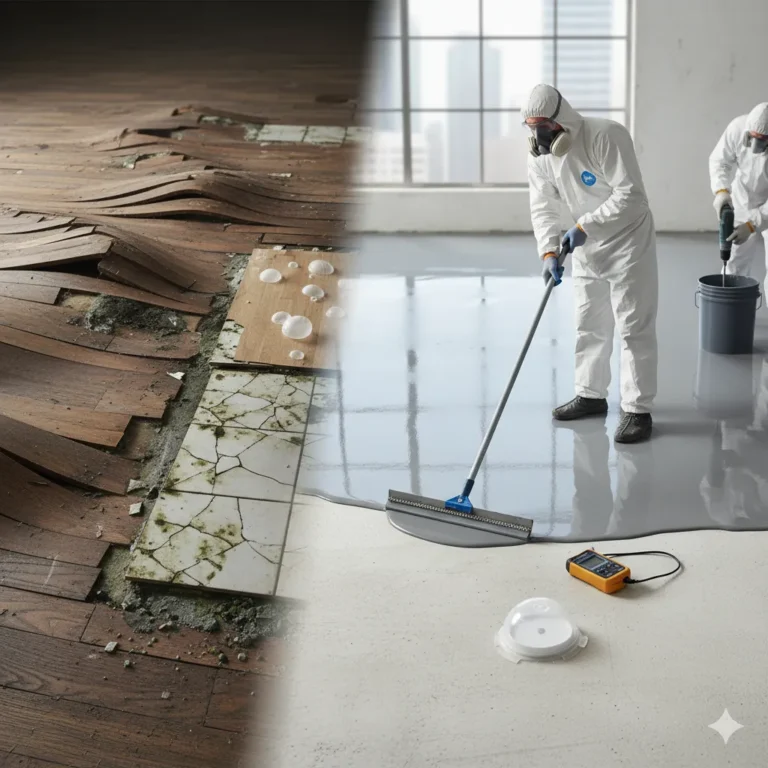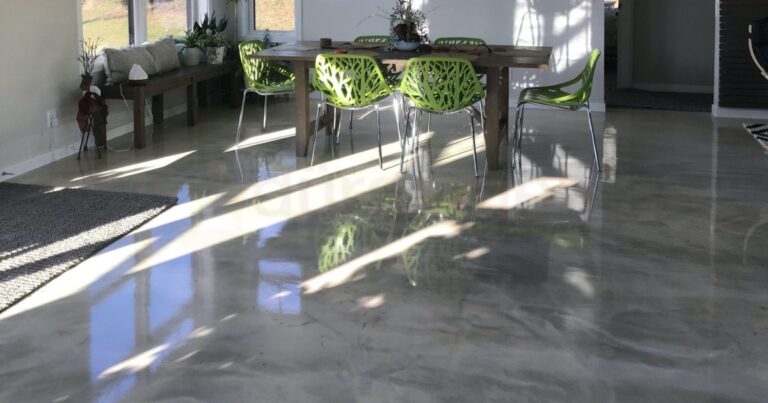The Rise of Co-Working Spaces and Their Flooring Needs
Trends in Shared Office Environments
The co-working industry has experienced exponential growth in recent years, revolutionizing the way professionals work and collaborate. This surge in popularity has led to an increased demand for versatile, functional, and aesthetically pleasing shared office spaces. As these environments continue to evolve, so do the requirements for their flooring solutions.
Co-working spaces are designed to foster creativity, productivity, and networking among diverse groups of professionals. They often feature open layouts, flexible workstations, and communal areas that encourage interaction and collaboration. This unique setup presents specific challenges when it comes to flooring choices, as the surfaces need to withstand high foot traffic, frequent furniture rearrangement, and diverse activities.
Key trends in shared office environments include:
- Multi-functional spaces that can adapt to various needs
- Incorporation of biophilic design elements
- Integration of technology for seamless connectivity
- Focus on wellness and ergonomics
Importance of Durable Flooring in High-Traffic Areas
In co-working spaces, durability is paramount when selecting flooring materials. High-traffic areas, such as entryways, corridors, and communal zones, require flooring that can withstand constant use without showing signs of wear and tear. Durable flooring not only maintains its appearance over time but also ensures safety by preventing slips, trips, and falls.
Epoxy flooring has emerged as a popular choice for co-working spaces due to its exceptional durability and resistance to heavy foot traffic, spills, and impacts. This seamless flooring solution can withstand the demands of busy shared offices while maintaining its aesthetic appeal for years to come.
Benefits of durable flooring in high-traffic areas:
- Reduced maintenance costs
- Improved safety for occupants
- Enhanced longevity of the flooring investment
- Consistent appearance despite heavy use
Balancing Style and Functionality in Co-Working Spaces
While durability is crucial, the aesthetic appeal of flooring in co-working spaces cannot be overlooked. The right flooring choice can significantly impact the overall ambiance and brand image of a shared office environment. Modern co-working spaces often aim to create a stylish, inviting atmosphere that inspires creativity and productivity.
Epoxy flooring offers a perfect balance between style and functionality. With a wide range of colors, patterns, and finishes available, epoxy floors can be customized to complement any interior design scheme. From sleek, minimalist looks to bold, vibrant designs, epoxy flooring provides endless possibilities for creating visually striking shared office spaces.
Factors to consider when balancing style and functionality:
- Color psychology and its impact on mood and productivity
- Branding opportunities through flooring design
- Compatibility with other interior elements
- Ease of cleaning and maintenance
Epoxy Flooring as a Versatile Solution for Shared Offices
Benefits of Epoxy Flooring in Co-Working Environments
Epoxy flooring has gained popularity in co-working spaces due to its numerous advantages. This versatile flooring solution offers a combination of durability, aesthetics, and practicality that makes it ideal for shared office environments.
One of the primary benefits of epoxy flooring is its exceptional resistance to wear and tear. In high-traffic areas of co-working spaces, epoxy floors can withstand constant foot traffic, rolling chairs, and heavy equipment without showing signs of damage. This durability translates to reduced maintenance costs and longer intervals between floor replacements.
Additionally, epoxy flooring is highly resistant to spills, stains, and chemicals, making it easy to clean and maintain. This feature is particularly valuable in co-working spaces where coffee spills and food accidents are common occurrences. The seamless nature of epoxy floors also eliminates cracks and crevices where dirt and bacteria can accumulate, promoting a cleaner and healthier work environment.
Key benefits of epoxy flooring in co-working spaces:
- Exceptional durability and longevity
- Resistance to spills, stains, and chemicals
- Easy maintenance and cleaning
- Improved hygiene and sanitation
- Slip-resistant options for enhanced safety
Customization Options for Epoxy Floors
One of the most appealing aspects of epoxy flooring for co-working spaces is its vast customization potential. Epoxy floors can be tailored to match any design aesthetic, from sleek and modern to warm and inviting. This versatility allows shared office spaces to create unique environments that reflect their brand identity and appeal to their target clientele.
Epoxy flooring offers a wide range of color options, from subtle neutrals to bold, vibrant hues. Metallic epoxy finishes can create stunning, three-dimensional effects that add depth and visual interest to the space. Custom patterns, logos, and designs can also be incorporated into epoxy floors, providing opportunities for branding and wayfinding within the co-working environment.
Customization options for epoxy flooring:
- Solid colors and color blends
- Metallic and pearlescent finishes
- Textured surfaces for added grip
- Embedded graphics and logos
- Decorative flake and quartz systems
Durability and Longevity of Epoxy Coatings
Epoxy flooring is renowned for its exceptional durability and longevity, making it an excellent investment for co-working spaces. When properly installed and maintained, epoxy floors can last for decades, even in high-traffic commercial environments.
The durability of epoxy flooring stems from its chemical composition. Epoxy is a thermosetting resin that, when mixed with a hardener, creates a strong, cross-linked polymer structure. This results in a surface that is highly resistant to impacts, abrasions, and chemical exposure.
In co-working spaces, where the floor is subjected to constant use and occasional abuse, epoxy coatings provide a protective layer that prevents damage to the underlying substrate. This not only extends the life of the flooring but also maintains its appearance over time, ensuring that the shared office space continues to look professional and well-maintained.
Factors contributing to the durability of epoxy flooring:
- Chemical resistance to common spills and cleaning agents
- High compressive strength to withstand heavy loads
- Excellent adhesion to properly prepared substrates
- UV stability to prevent fading and discoloration
- Resistance to thermal shock and temperature fluctuations
Stylish Flooring Options for Modern Co-Working Spaces
Luxury Vinyl Tile (LVT) for Aesthetic Appeal
Luxury Vinyl Tile (LVT) has emerged as a popular flooring option for modern co-working spaces due to its combination of aesthetic appeal and practicality. LVT offers the look of natural materials like wood or stone but with enhanced durability and easier maintenance.
In shared office environments, LVT provides a warm and inviting atmosphere that can mimic the comfort of a home office while maintaining a professional appearance. The wide variety of designs available in LVT allows co-working spaces to create unique and stylish interiors that cater to diverse tastes and preferences.
LVT is also known for its acoustic properties, which can help reduce noise transmission in busy co-working environments. This feature is particularly valuable in open-plan layouts where sound control is essential for maintaining a productive atmosphere.
Advantages of LVT in co-working spaces:
- Realistic wood and stone visuals
- Excellent durability and wear resistance
- Easy installation and replacement of individual tiles
- Water-resistant properties
- Comfortable underfoot and noise-reducing qualities
Carpet Tiles for Comfort and Easy Maintenance
Carpet tiles offer a balance of comfort and practicality that makes them well-suited for certain areas within co-working spaces. These modular flooring units provide a soft, cushioned surface that enhances comfort and reduces fatigue for workers who spend long hours on their feet.
In shared office environments, carpet tiles can be strategically used in areas where noise reduction is crucial, such as meeting rooms or quiet work zones. The sound-absorbing properties of carpet help create a more peaceful and focused atmosphere, which is essential for productivity in bustling co-working spaces.
One of the key advantages of carpet tiles in shared offices is their easy maintenance and replacement. Individual tiles can be quickly swapped out if damaged or stained, minimizing downtime and maintaining the overall appearance of the space.
Benefits of carpet tiles in co-working environments:
- Excellent acoustic properties for noise reduction
- Comfortable underfoot for long periods of standing or walking
- Easy replacement of individual tiles
- Wide range of colors and patterns for design flexibility
- Improved indoor air quality through dust trapping
Polished Concrete for Industrial Chic Look
Polished concrete flooring has gained popularity in modern co-working spaces, particularly those aiming for an industrial or minimalist aesthetic. This flooring option offers a sleek, contemporary look that complements the open and airy feel of many shared office environments.
The process of polishing concrete transforms an ordinary concrete slab into a smooth, glossy surface that resembles polished stone. This treatment not only enhances the appearance of the floor but also increases its durability and ease of maintenance, making it an excellent choice for high-traffic areas in co-working spaces.
Polished concrete floors are highly reflective, which can help brighten interior spaces and reduce the need for artificial lighting. This can contribute to energy savings and create a more inviting atmosphere for co-working members.
Advantages of polished concrete in shared offices:
- Durable and long-lasting surface
- Low maintenance requirements
- Improved light reflectivity for brighter interiors
- Environmentally friendly option (utilizes existing concrete slab)
- Customizable with stains and dyes for unique looks
Designing Shared Office Spaces with Durable Flooring
Creating Functional Zones with Different Flooring Types
Effective design in co-working spaces often involves creating distinct functional zones to accommodate various activities and work styles. Flooring plays a crucial role in delineating these areas and can significantly impact the functionality and flow of the space.
By using different flooring materials or designs, shared office environments can visually separate areas for focused work, collaboration, relaxation, and socializing. For example, epoxy flooring might be used in high-traffic areas and communal spaces for its durability and easy maintenance, while carpet tiles could be employed in quiet zones to enhance acoustics and comfort.
Duraamen, a leading provider of commercial flooring solutions, offers a range of products that can be combined to create functional and visually appealing co-working spaces. Their epoxy flooring systems, in particular, provide the versatility needed to design distinct zones while maintaining a cohesive overall look.
Strategies for creating functional zones with flooring:
- Use color transitions to define different areas
- Incorporate patterns or textures to guide foot traffic
- Combine hard and soft flooring materials for varied experiences
- Utilize flooring designs to complement furniture layouts
- Implement wayfinding elements through floor markings or inlays
Incorporating Brand Identity Through Floor Design
Flooring presents a unique opportunity to reinforce brand identity within co-working spaces. By incorporating brand colors, logos, or design elements into the floor, shared office environments can create a cohesive and memorable experience for members and visitors alike.
Epoxy flooring, with its extensive customization options, is particularly well-suited for brand integration. Custom colors can be mixed to match exact brand specifications, while logos and graphics can be embedded directly into the epoxy surface for a long-lasting and professional appearance.
For co-working spaces that host multiple companies or frequently change tenants, modular flooring options like carpet tiles or LVT can provide flexibility in branding. These materials allow for easy updates or replacements to accommodate new occupants or evolving brand identities.
Ways to incorporate brand identity through flooring:
- Use brand colors in solid epoxy floors or as accents
- Embed company logos or taglines into epoxy surfaces
- Create custom patterns that reflect brand values or industry
- Utilize flooring transitions to highlight branded areas
- Implement QR codes or interactive elements in floor design
Acoustic Considerations in Flooring Choices
In open-plan co-working environments, managing acoustics is essential for creating a productive and comfortable workspace. Flooring plays a significant role in sound control, and choosing the right materials can help reduce noise transmission and improve overall acoustic comfort.
Hard surfaces like polished concrete or epoxy flooring can contribute to sound reflection and amplification. While these materials offer excellent durability and aesthetics, they may need to be balanced with sound-absorbing elements in the space. This can be achieved through the strategic use of area rugs, acoustic panels, or by incorporating softer flooring materials in specific zones.
Carpet tiles and LVT with acoustic backing are excellent choices for areas where noise reduction is a priority, such as meeting rooms or phone booths. These materials help absorb sound and reduce reverberation, creating a more pleasant acoustic environment.
Acoustic considerations for co-working space flooring: Epoxy flooring customization lets you choose colors and patterns for your floor You can make your floor look unique with Metallic epoxy flooring is a shiny and colorful type of floor coating that looks like swirling metal It makes regular floors look fancy and is very strong and easy to clean
Resilient museum cafeteria epoxy is a super strong floor coating that can handle lots of people walking on it and spills from food and drinks It helps keep museum cafeterias clean and looking nice for a long time UAE flooring options
UAE coating selection involves choosing the right protective layers for buildings and structures in the United Arab Emirates These coatings help protect against harsh desert conditions like extreme heat and sand Chemical resistant epoxies
- Combine hard and soft flooring materials for balanced acoustics
- Use underlayments or acoustic backing for hard surface floors
- Implement sound-absorbing flooring in noise-sensitive areas
- Consider the impact of flooring on foot traffic noise
- Utilize textured surfaces to diffuse sound waves
Maintenance and Care for Co-Working Space Flooring
Daily Cleaning Routines for High-Traffic Areas
Maintaining clean and well-kept floors is crucial for the overall appearance and functionality of co-working spaces. High-traffic areas require particular attention to prevent the buildup of dirt, debris, and potential damage. Implementing a consistent daily cleaning routine is essential for preserving the quality and appearance of the flooring.
For epoxy flooring, which is common in many co-working environments, daily maintenance typically involves sweeping or dust mopping to remove loose dirt and debris. This simple step can significantly reduce the risk of scratches and maintain the floor’s glossy appearance. In areas prone to spills, such as kitchenettes or coffee stations, prompt cleaning with a damp mop and pH-neutral cleaner is recommended to prevent staining.
Carpet tiles and LVT in shared office spaces should be vacuumed daily to remove dirt and prevent it from becoming embedded in the fibers or texture. For polished concrete floors, dust mopping and occasional damp mopping with clean water are usually sufficient for daily maintenance.
Daily cleaning checklist for co-working space flooring:
- Sweep or dust mop all hard surface floors
- Vacuum carpet tiles and area rugs
- Spot clean spills and stains immediately
- Damp mop high-traffic areas as needed
- Empty and clean walk-off mats at entrances
Long-Term Maintenance Strategies
While daily cleaning is essential, long-term maintenance strategies are crucial for extending the life of flooring in co-working spaces and preserving its appearance over time. These strategies often involve more intensive cleaning methods, periodic treatments, and preventative measures.
For epoxy flooring, periodic deep cleaning with a machine scrubber and appropriate cleaning solution can help remove stubborn dirt and restore the floor’s shine. Depending on the level of traffic and wear, reapplication of a topcoat every few years may be necessary to maintain the epoxy’s protective properties and appearance.
Carpet tiles benefit from regular deep cleaning, typically through hot water extraction methods, to remove deeply embedded dirt and refresh the fibers. LVT and polished concrete may require occasional stripping and reapplication of protective coatings to maintain their appearance and durability.
Long-term maintenance considerations:
- Schedule professional deep cleaning at regular intervals
- Implement a floor protection program (e.g., chair mats, furniture pads)
- Conduct periodic inspections to identify and address potential issues
- Maintain proper indoor environment (humidity, temperature) to prevent flooring damage
- Keep an inventory of flooring materials for quick repairs or replacements
Addressing Wear and Tear in Shared Spaces
Despite the best maintenance efforts, wear and tear are inevitable in high-traffic co-working environments. Addressing these issues promptly and effectively is crucial for maintaining a professional appearance and ensuring the safety of occupants.
For epoxy flooring, minor scratches or scuffs can often be buffed out or touched up with a compatible epoxy product. More significant damage may require patching or, in severe cases, resurfacing of the affected area. It’s important to work with experienced professionals, such as those at Duraamen, to ensure repairs are done correctly and blend seamlessly with the existing floor.
Carpet tiles offer the advantage of easy replacement for damaged or heavily worn sections. Keeping extra tiles on hand allows for quick swaps without disrupting the entire floor. For LVT, individual planks or tiles can be replaced as needed, while polished concrete may require re-polishing or the application of a new topcoat to address wear patterns.
Strategies for addressing wear and tear:
- Conduct regular inspections to identify areas of concern
- Implement a repair protocol for prompt addressing of damages
- Maintain a stock of replacement materials for quick fixes
- Consider rotating furniture or workstations to distribute wear evenly
- Educate co-working members on proper care and use of the flooring
FAQs
What is the best flooring for a co-working space?
The best flooring for a co-working space depends on various factors, including the specific needs of the environment, budget, and aesthetic preferences. Epoxy flooring is often considered an excellent choice due to its durability, easy maintenance, and customization options. It can withstand high traffic and resist spills, making it ideal for busy shared office environments. Other popular options include luxury vinyl tile (LVT) for its aesthetic appeal and comfort, and polished concrete for a modern, industrial look.
